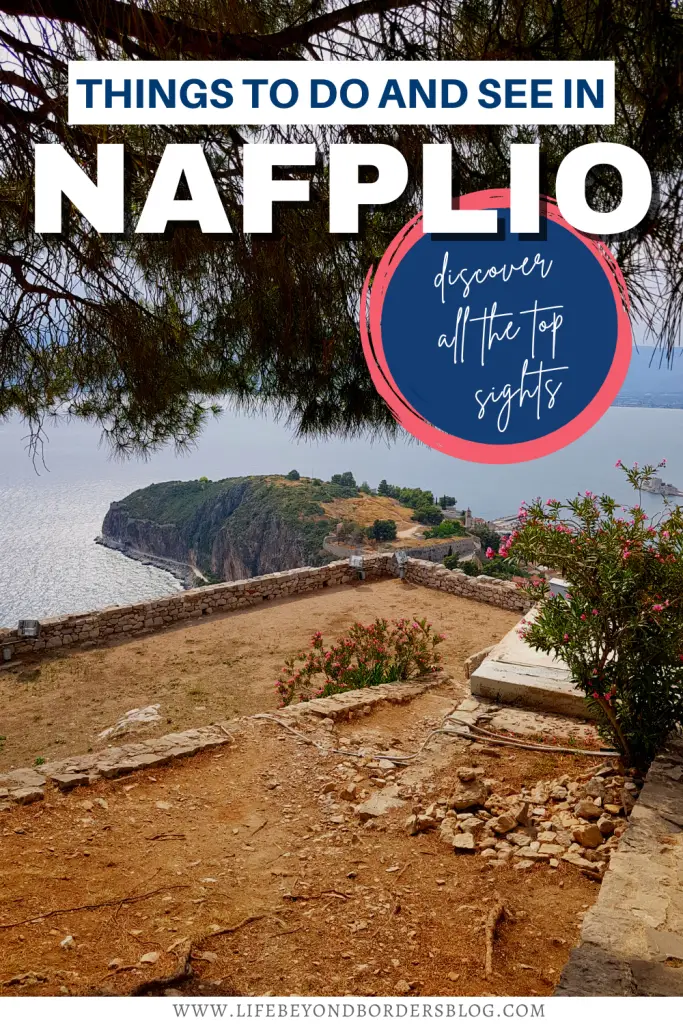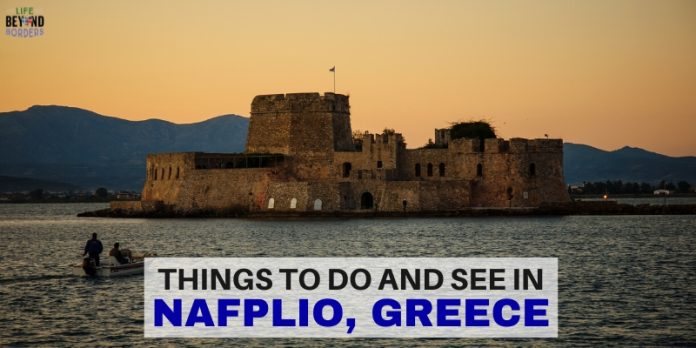Located at just under a two hour drive or coach ride from Athens, the coastal town of Nafplio–the original capital city of Greece when the new Greek state was formed in 1823–is perfect for a day trip, but there’s so much to see and do in the town and around the area that I suggest spending a long weekend to discover more.
Come with me and explore the things to do in and around Nafplio.
Fortress of Palamidi
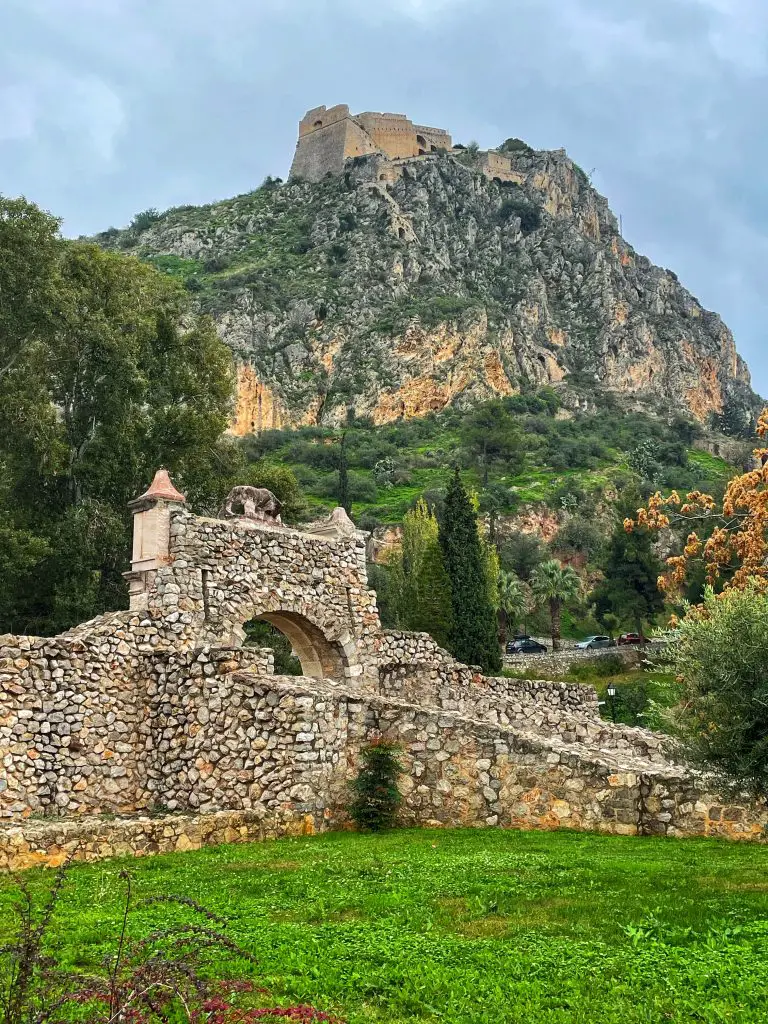
Standing 216 meters, Palamidi keeps a watchful eye over the town as its main fortress. Built by the Venetians in the early 19th century, there are eight bastions with the chapel of Agios Andreas within the central one.
Over the years, Palamidi has had a variety of uses, mainly as a prison in the 1800s. One of the leaders of the Greek Revolution, Theodoros Kolokotronis, was imprisoned here in 1833 and charged with high treason. All prisoners had to undertake hard manual labour.
If you want to walk up to the castle, it’s 999 steps so I suggest taking it slowly. These steps were built by the prisoners as part of their labour.
Tip: Take a taxi up from the Old Town which is a destination in itself; bougainvillea clad cobbled streets leading to the historically important Syntagma Square where, in 1826 a speech was given under the huge plane tree that dominates it by Georgios Gennadios, the ‘Teacher of Greece’ to persuade people to give up their money and possessions in support of the Greek Rebellion against Ottoman Rule.
Enjoy the sweeping views across the Argolic Gulf sea and surrounding mountains from the castle, then walking down.
Bourtzi Fortress
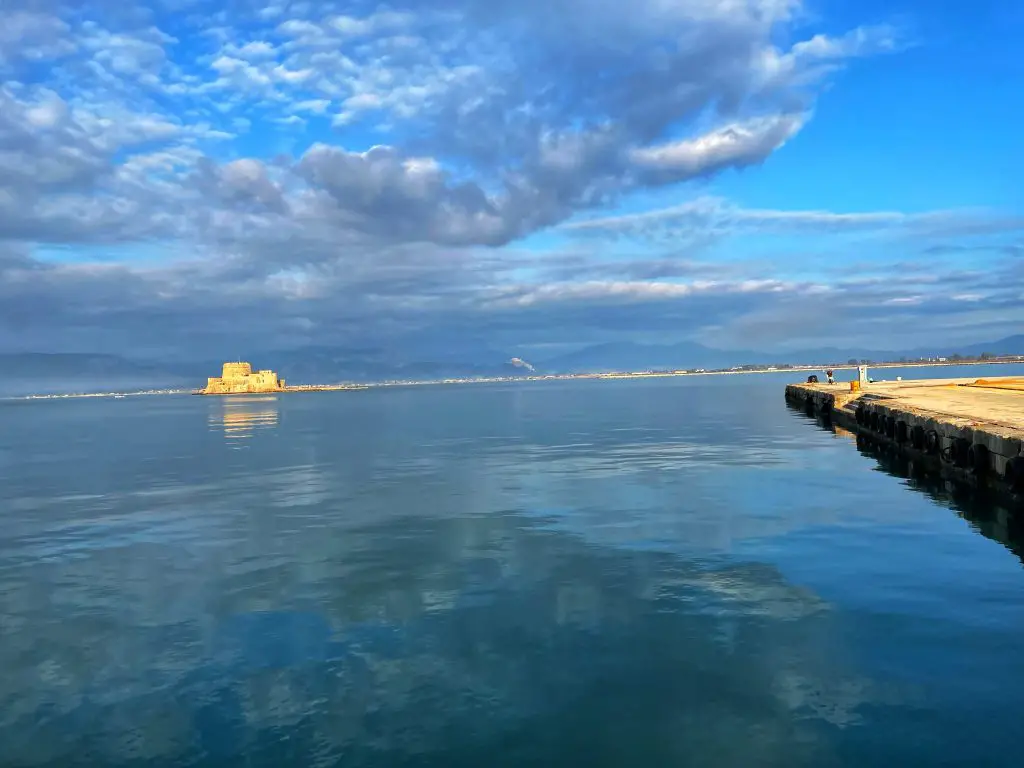
Bourtzi Fortress is a Venetian castle built on an island just off Nafplio’s coastline.
Built in 1471 it used to be the home of the executioner of the prisoners who were kept in Palamidi Fortress. For 40 years after World War II to the ’70s the fortress operated as a boutique hotel. Nowadays it’s possible to take a boat trip from Nafplio around Bourtzi and in the summer it often hosts music and cultural festivals.
It’s visible from the harbour, so sit and enjoy the view and your Greek coffee from one of the many cafes or tavernas that line the waterfront.
Tip: Double check locally if it’s possible to go onto the island as since Covid-19, restrictions have been in place about actually setting foot on the island, but a boat trip around it is still worth it.
Ancient site of Mycenae
Home to King Agamemmon, Leader of the Greeks through the Trojan War, aside from the Acropolis of Athens Mycenae is thought to be one of the most famous archaeological sites in the country. Half an hour’s drive from Nafplio, Mycenae was a military civilisation that flourished from about 1600 to 1000 B.C.
Legend has it that the huge walls around the site (the crumbled remains of which can still be seen) were constructed by Cyclopes, the one-eyed monster. The most famous aspect of the site is its massive Lions Gate entry point, where the worn figureheads of two lions can be spotted on the archway.
King Agamemnon’s tomb is located approximately a 5-minute drive away.
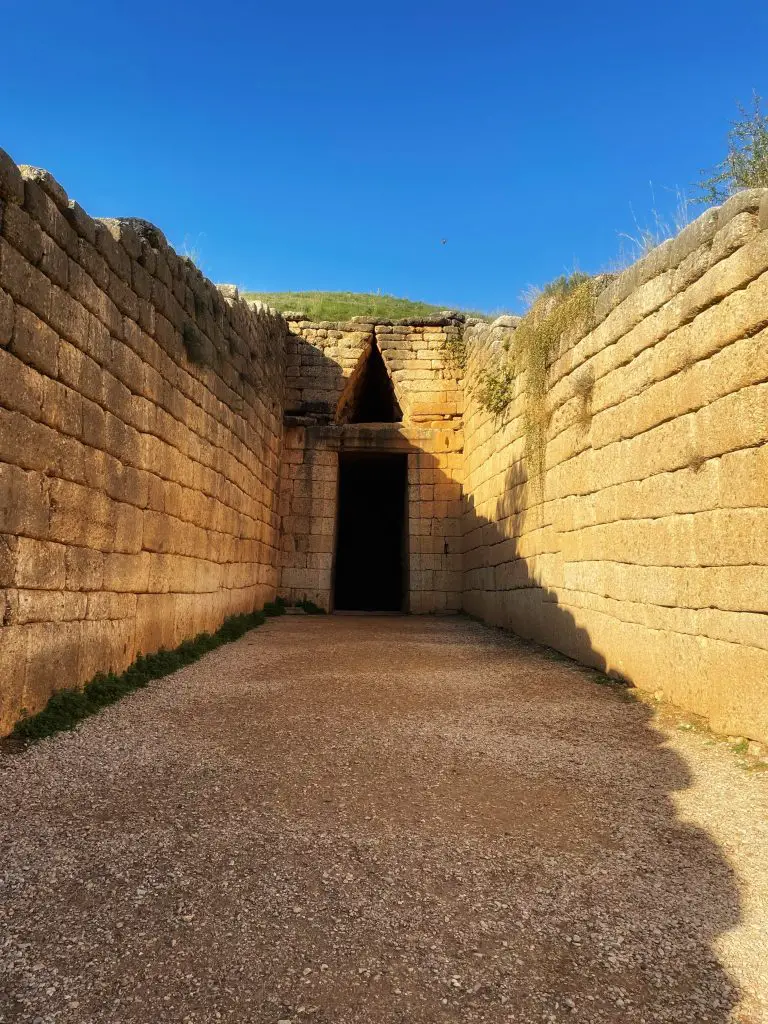
Ancient Stadium of Nemea & Semeli Winery
About 45-minutes from Nafplio is Nemea, like Ancient Olympia which is also in the Peloponnese and where the Olympic Games originated. Nemea has an ancient stadium where the Nemean Games were hosted every two years; one year before and one year after the Olympics. Only males could take part and since 1994, the games have been re-enacted.
The region has fertile soil and is home to one of Greece’s most celebrated varieties of grapes — the Agiorgitiko, which is produced into rosé and aged in oak. There are several wineries to visit in the region, one of the best and spread out amongst beautiful countryside with views down to the sea is the Semeli Estate. Book a wine-tasting tour and sample several cheeses too.
Cave of Kapsia
About an hour’s drive from Nafplio, come and walk through the other worldly ancient Cave of Kapsia.
It was discovered in 1887 by a French Archaeologist Gustave Fougeres who found human bones and daily utensils made of pottery, proof that as the cave is located in a valley, the valley once flooded and the people sought shelter in the cave, but perished.
The Hall of Wonders has stalactites and stalagmites forming unique shapes over thousands of years in gorgeous colours of reds, blue and yellow.
Dimitsana Mountain Village
Located on the slopes of the Gortynian Mountains, about a one and a half our drive from Nafplio is Dimitsana, a village also known as the ‘Lady of Moria’ (Moria being the name of the Peloponnese during the Middle Ages).
It’s named due to its nobility and the fact it made a great contribution to the Greek Revolution against Ottoman Rule.
The cobbled streets, mountain views down the valley and traditional houses and tavernas are like a living open air museum.
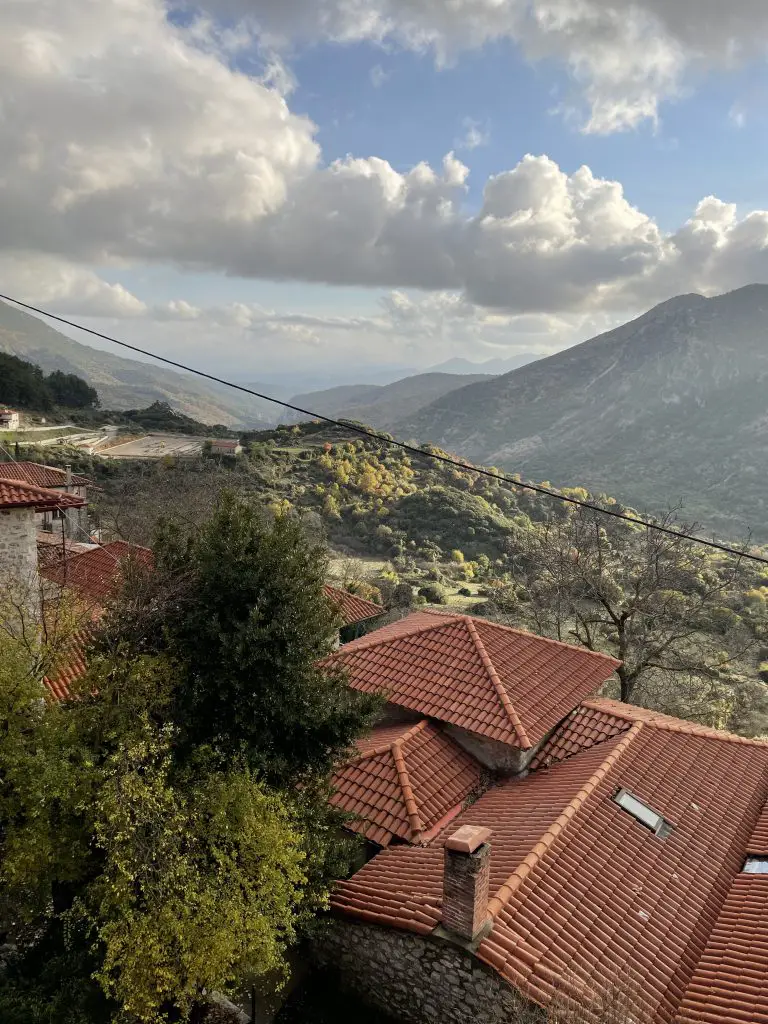
Where we’ve been
PIN for later
